Affiliate disclosure: This post may contain affiliate links. Please see our Privacy Policy.
AA flashlights are incredibly useful for portable lighting, useful for everything from walking the dog to dealing with a week-long power outage.
Since AA batteries are inexpensive and easy to find, they’re some of the most useful flashlights regardless of the situation.

(This detailed review is written by Jack Lloyd, our resident tech expert and gear head.)
Best AA Flashlights
This comprehensive review on the best flashlights is incredibly thorough, and for those of you in a hurry, I’m going to give you my picks for the best AA flashlights in a quick summary.
Read on for details covering ease of use, lumens, battery life and price considerations.
Best AA Flashlight
My view after trialing all these lights (and a few others not worth the mention) is the best general purpose AA flashlights are the Fenix LD42 and Nitecore EA42.
The bar shaped body prevents rolling, the sturdy plastic bodies do not get cold in winter or overly hot during use, and both can produce enough light for nearly any purpose.
The Nitecore has higher maximum output, and adds strobe and SOS modes, while the Fenix offers the superior rotary switch control.
If I had to choose one, I’d go with the Fenix LD42 due to the very convenient control system.

Best EDC Flashlight
The Fenix E12 is by far the Best EDC Flashlight I reviewed.
EDC stands for “Every Day Carry” which means that this flashlight is rugged, small and easy to use. A good second choice is the Ultra fire SK68, which is also small and inexpensive…but not nearly as small or easy to use.
Best Budget Flashlight
For small everyday lights, you just cannot beat a 5 pack of Ultrafire SK68s.
The Fenix E12 is great, and superior as a pocket light, but it so much more expensive compared to the SK68 that it can be hard to justify unless you really are going to carry it in your pants pocket on a daily basis.
If it is just sitting in a drawer or in your glovebox, an SK68 is more than sufficient.
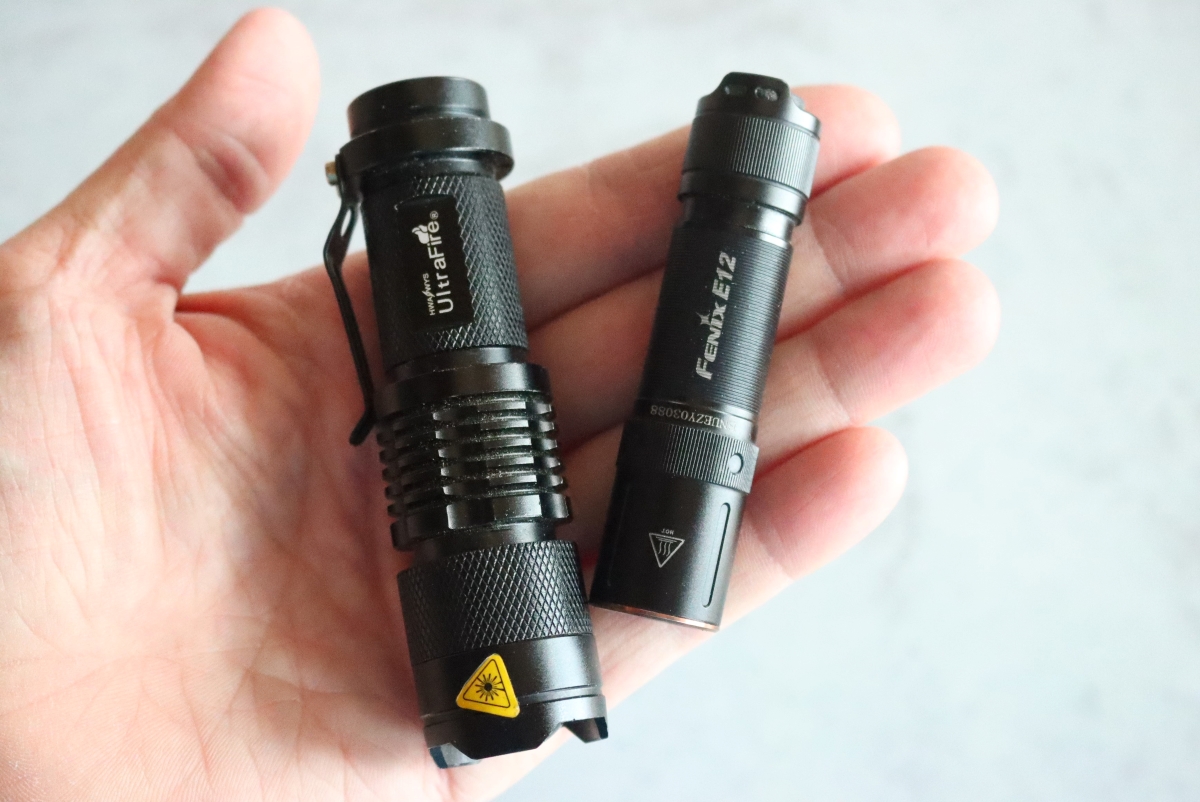
Why Choose AA Flashlights?
There are a number of power options available including the ubiquitous 1.5 volt AAA, AA and D cell batteries and the newer and higher voltage CR123A, 14500 and 18650 battery systems. All of these options have their merits but there is a single factor that makes one king – the wide commonality of AA batteries.
Many different lights (and other battery-powered devices) use double “A” batteries, they’re are cheaply and easily available in nearly any store, and you can buy excellent rechargeable AA batteries.
Some AA lights are even compatible with 14500 batteries, which have a higher voltage and can produce more light – but be careful here! If you put a 3.7V 14500 battery into a light that expects only 1.5V AA batteries you will briefly get a very bright light, followed by darkness as the whole thing self destructs. So check the specifications carefully before trying this.
(Of course, if you are willing to cast off the shackles of AA conservatism you can get some amazingly bright flashlights for very reasonable prices, like this 12000 lumen monster.)
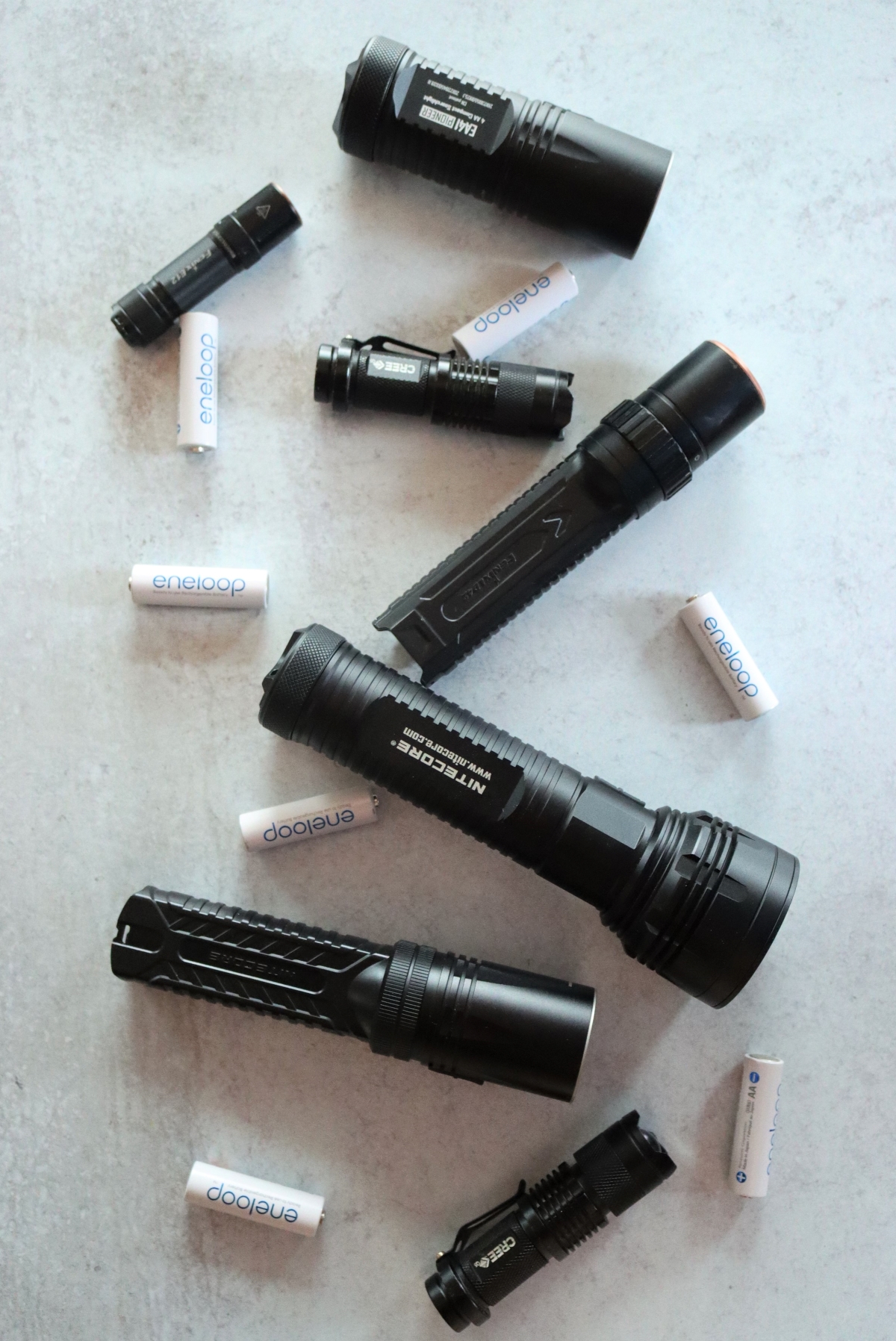
Types of Flashlight Bulbs
These days all of the best flashlight designs use LEDs, which are virtually unbreakable and offer enormous light output. Don’t even consider old incandescent or halogen bulbs which are fragile, less bright and use more power.
Technology has come a long way since the first flashlights, and with LEDs you’re able to get incredible light output from a simple AA flashlight and plenty of usage hours on a single charge.
Comparing Flashlight Brightness
There are two distinct ways of measuring how bright something is – lumens and lux. Lumens measures the total light output (how bright it is) while lux measures the lumens per area at a distance.
A light may have high lumens, but if the “throw” is poor it will not be able to focus that light into a beam that will illuminate distant targets (and so will have a low lux). Manufacturers do not directly advertise lux but will instead speak in terms of the throw distance, which of course is actually what we care about.
How many lumens you need will depend on your use.
- 5-10 lumens is good enough for something like reading a book with the power out or finding the last can of tuna in the back of your pantry.
- 100 to 300 lumens will be a good general use light for outdoors, say while walking at night or camping.
- 1000+ lumens you can clearly illuminate objects hundreds of feet away.
There is a sharp tradeoff of light output to battery time.
For example, a flashlight might be able to run for 12 hours producing 150 lumens, but only 2 hours when set to 300 lumens. For this reason, most LED flashlights, especially ones capable of powerful beams, have a range of output levels.
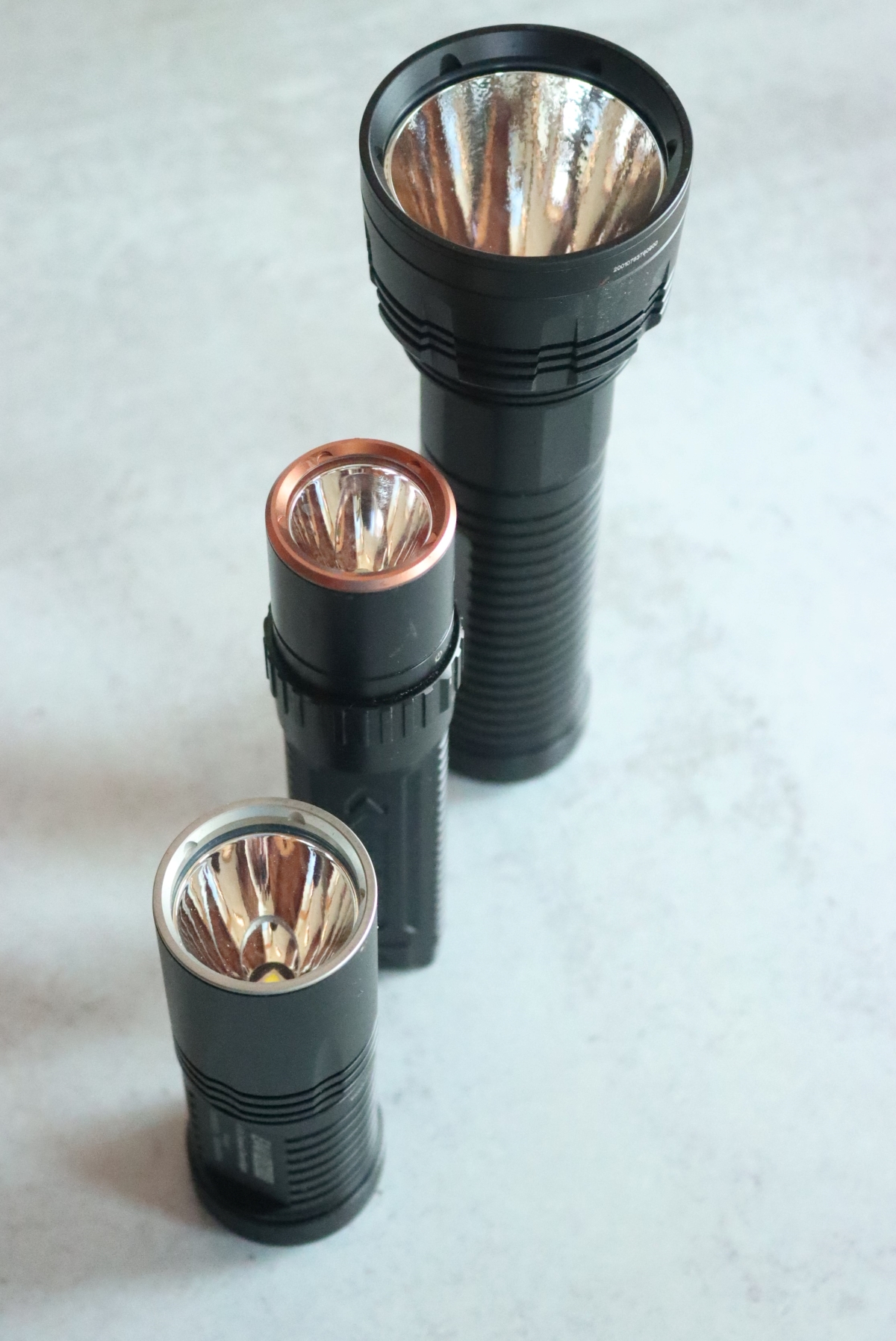
Best AA Batteries to Use In Flashlights
Beware of alkaline AA batteries! Even the best brands of alkalines can leak, and over the years I have lost easily $100 worth of flashlights to leaking alkalines.
Some alkaline battery manufacturers offer a return system if a failed battery destroys a device, but usually the process is so painful (filling out paperwork, finding your receipts, …) and/or expensive (in terms of shipping costs) that it isn’t worth the bother.
Nowadays any alkaline batteries that show up at our house due to being included with lights, smoke detectors, or toys are stashed away in a box in the basement for emergency use, and only Eneloop NiMh batteries are actually used in our devices. I’ve been using Eneloops for years and so far have not had any issues with leaks or battery failure.
Older rechargeable battery designs have a high self-discharge rate, which means they will lose power over time even if not used. Eneloops use a newer design which is rated to lose no more than 10% of charge after a year or 30% after 5 years. So you can charge them and have a few saved away for when the power goes out.
Eneloops (and other NiMh batteries) can also provide more power than alkalines when the draw is high, which is exactly what happens in a powerful light. For example, Fenix rates the E20 as having 80 minutes of runtime at max power using NiMh, but just 30 minutes with alkalines. At lower power, NiMh has less of an advantage – at 35 lumens the E20 can run for 22 hours on NiMh or 20 hours on alkaline.
Eneloop also makes the Eneloop Pro series, which has better power capacity and output, both of which can be useful in high drain uses like a flashlight.
But the Pro variant comes with some disadvantages. For one the cost is almost twice as much per battery compared to regular Eneloops. In addition, they are rated for only 500 charge/discharge cycles (which is probably still plenty, if we are being realistic) and it has a higher self-discharge rate, meaning they are not great for long term storage.
It may be worthwhile to keep a set or two around specifically for your flashlights.
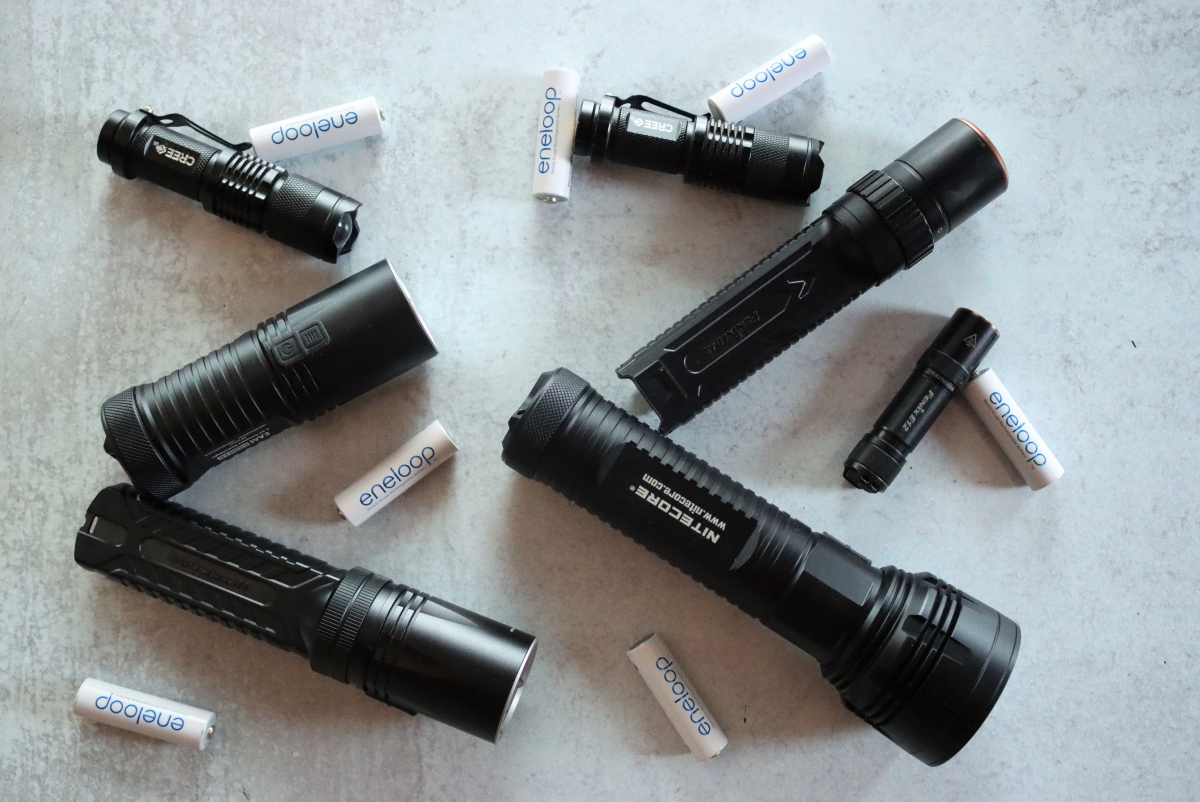
AA Flashlight Reviews
OK enough background, let’s talk about specific lights.
Since this is a “Double A” specific flashlight review, I’ve broken them down by the number of batteries required to power each light. That determines the power usage, which is directly correlated to potential light output. It also, obviously, dictates the size of the flashlight.
1xAA lights
Lights holding a single AA battery are good options for the pocket or purse. Runtimes will usually last a few hours which is more than enough for occasional use.
An excellent budget light is the Ultra fire SK68 which is often sold in bundles of 3 or 5.
Because they are so inexpensive we keep plenty around the house including some for the kiddos to use (and lose/break). The thumb control is easy to operate and it is possible to focus the beam for a longer throw.
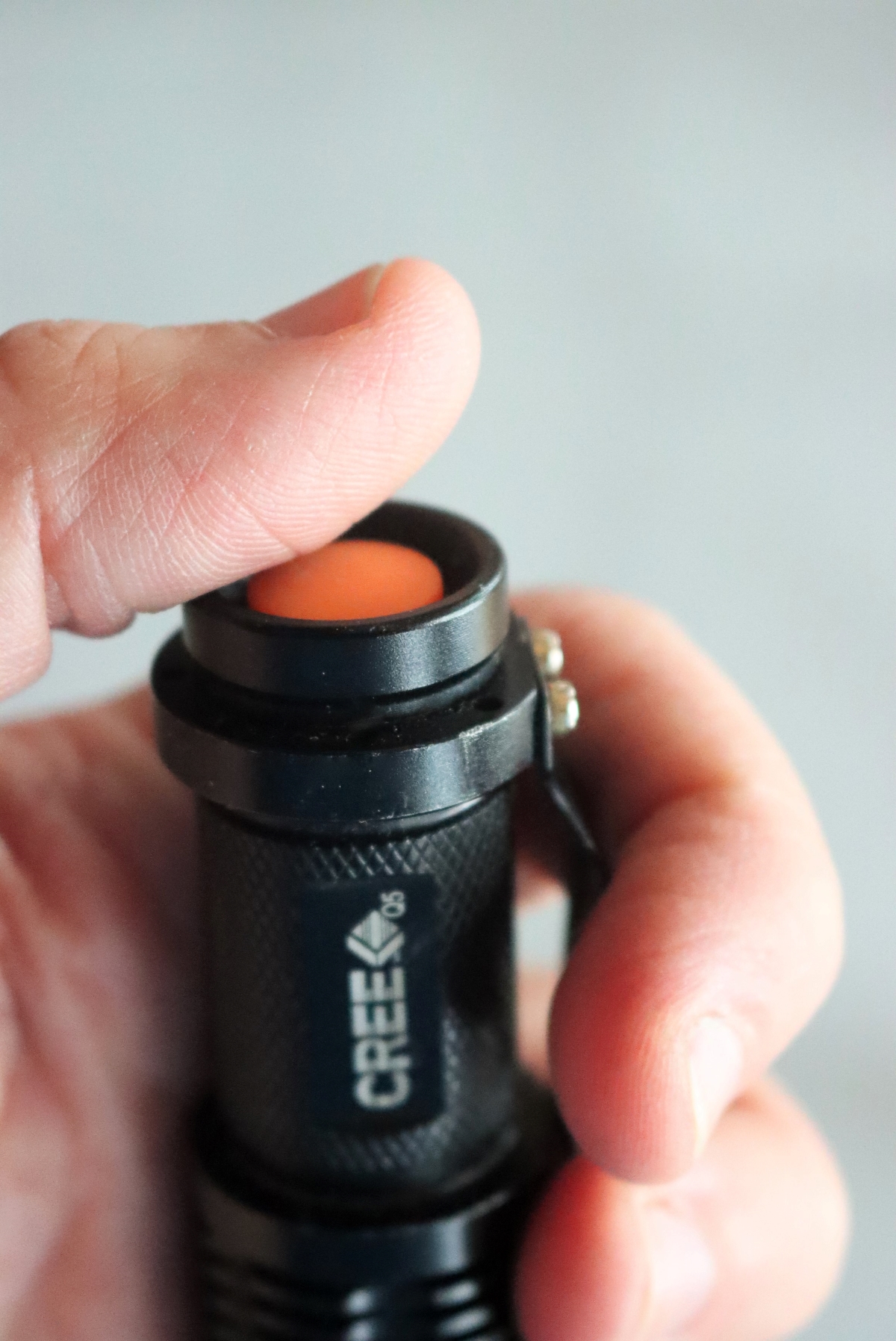
My main complaint is the odd shape makes them very uncomfortable to keep in a pocket, and awkward to remove. They are also surprisingly heavy.
For these reasons they are not great as a light to carry in your day to day – and like always having a knife in your pocket, there is a lot to be said for always having a flashlight for when need arises.
These lights also accept 14500 batteries and – presumably – the light would be brighter in that case, but I haven’t tried it.
Several other brands make cheaper clones/rebadges of the SK68 design, but the quality can be highly variable, and the Ultrafires are already so cheap that it doesn’t seem worth the bother.
A favorite of mine for every day carry is the Fenix E12.
The E12 has a somewhat lower luminosity than the SK68 (rated for 130 lumens maximum. with additional 8 and 50 lumen output modes), though to be honest I don’t notice much difference between the two. It makes up for any reduced output with a very slim package, barely bigger than the battery itself.
This makes it easy to carry consistently.
They are also IPX rated to withstand full immersion in water for up to 30 minutes. I don’t plan on going diving with a flashlight in my pocket, but sometimes being caught in a New England summer rainstorm can make it feel like you are going for a swim, so good water resistance is a plus in my book.
The E12 has a similar thumb control to the SK68; the brightness is selected by softly pressing the end button.
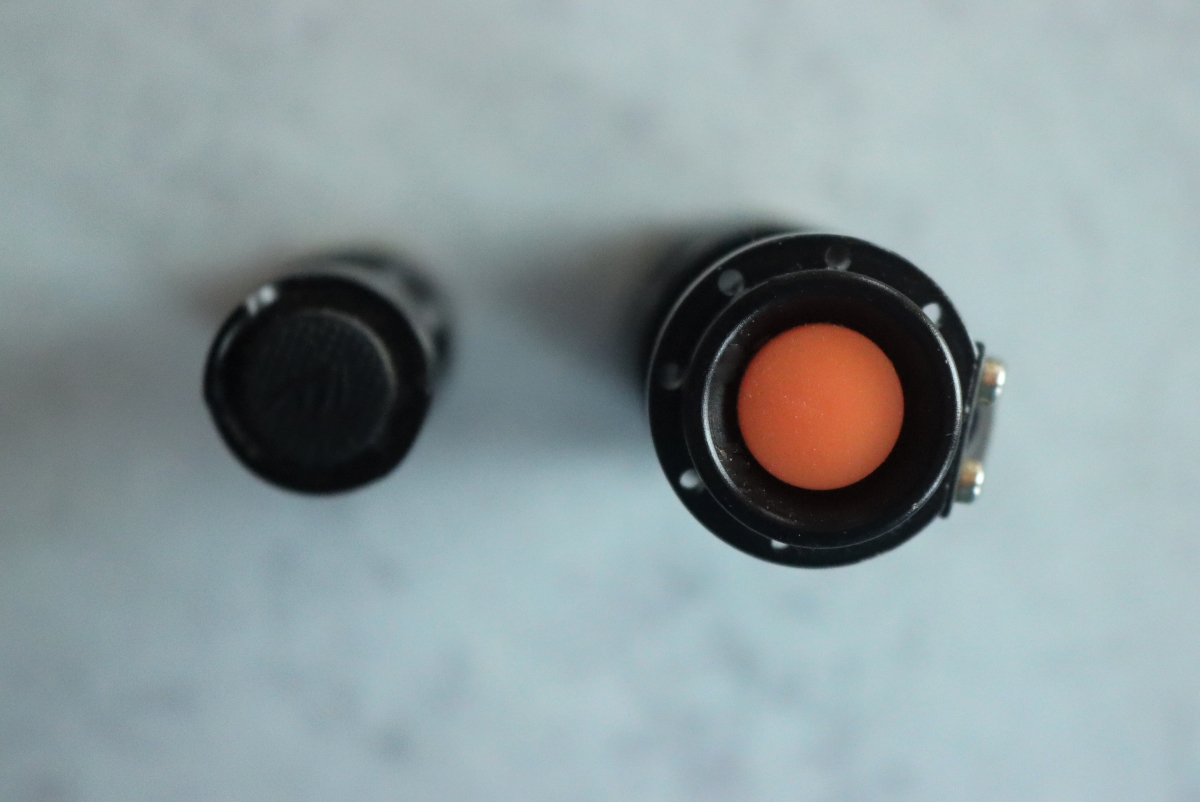
2xAA lights
After trialing several, I find 2 AA powered lights to be an awkward size. They are big enough that you can’t carry them around conveniently, but also not powerful enough to really throw light when you need it. So I’m not going to go into them too much – you are better off with either a 1xAA light that can fit in a pocket, or a slightly larger light that is much brighter and longer lasting.
The Fenix E20 is an absolutely fine light in the space. Like the E12 it uses a thumb control on the end which cycles through the different levels (for the E20 these are 8, 35, 95 and 265 lumens).
4xAA lights
With four 1.5 volt batteries powering them, a good LED can produce 1000+ lumens, enough for almost any use.
The Nitecore EA41 uses an XM-L2 LED with 5 different output levels (1, 50, 160, 580 and 1020 lumens) and also strobe and beacon options. This is on the surface a nice light, but I ultimately don’t like it and want to share why.
The main problem is that the EA41 is basically the shape of a soda can, which means it will roll if placed on any kind of sloping surface. This is terrible when you are trying to, say, change a tire in the dark.
Due to its shape it is also very awkward to hold in all but the largest of coat pockets.
The flat bottom means it easily sits upright – useful for illuminating a room during power outages – but I give this a lot less weight because any sort of light can be propped to point directly up using any random household object like a book or a can of soup.
Another issue is the controls.
Unlike thumb buttons at the end of the light, which are easy to find in the dark (and it is dark when you are using a flashlight, right?), the EA41 is controlled with two small buttons on the side – one for on/off and the other to control intensity.
If you grab the light in the dark you will have to carefully feel in order to find the buttons in order to turn it on. The small buttons are also difficult to operate when wearing gloves.
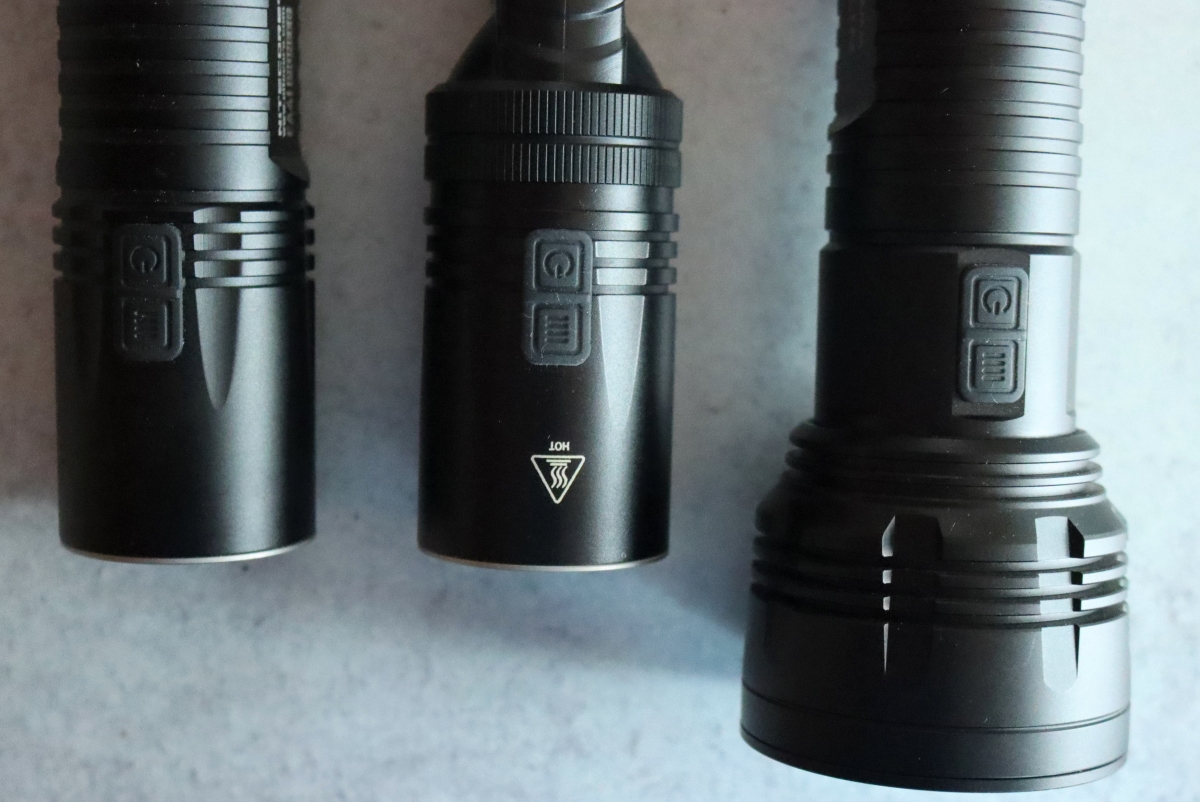
The metal body of the EA41 feels sturdy, but in winter it can be uncomfortable to hold.
The newer Nitecore EA42 has instead a so-called candy bar shape, which holds the batteries in a 2×2 arrangement. As a result, the body is longer (which makes it more comfortable to hold in my view) and critically it doesn’t roll, resolving my biggest complaint about the EA41.
As a bonus, the EA42 boosts the light output to 1, 55, 300, 850 and 1800 lumens. The two-button control arrangement is the same as the EA41.
The last 4xAA light I want to mention is the candy bar shaped Fenix LD42, again with 5 different output levels (5, 50, 150, 350 and 1000 lumens).
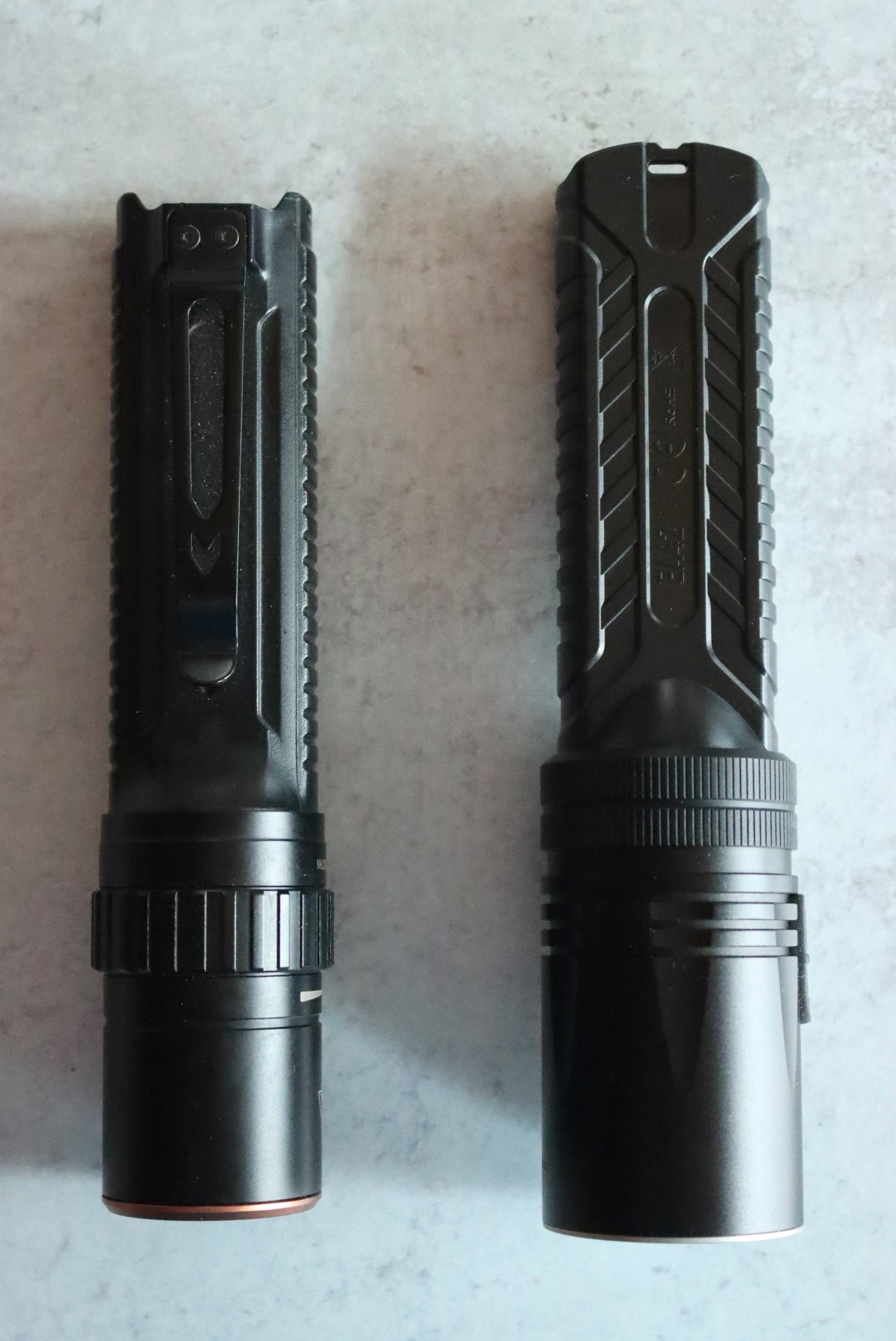
Uniquely, the brightness is selected using a rotary switch which can be operated using just flick of the thumb. So without having to adjust your grip, you can swiftly move from the lowest setting to the highest. For example, if something in the distance has caught your eye and you want to spotlight it.
This is in contrast to the thumb stud or Nitecore mechanisms where you have to cycle through the different output levels to reach the one you want, and where it is easy to cycle down from the highest setting to the lowest if you are not keeping track of how many times you have pressed the button.
The LD42 does lack a strobe mode, which some might consider important for signaling, self-defense, or disco parties.
8xAA lights
There are not that many options in this size; with 8+ AA batteries, the light is large enough that a D cell flashlight probably makes more sense.
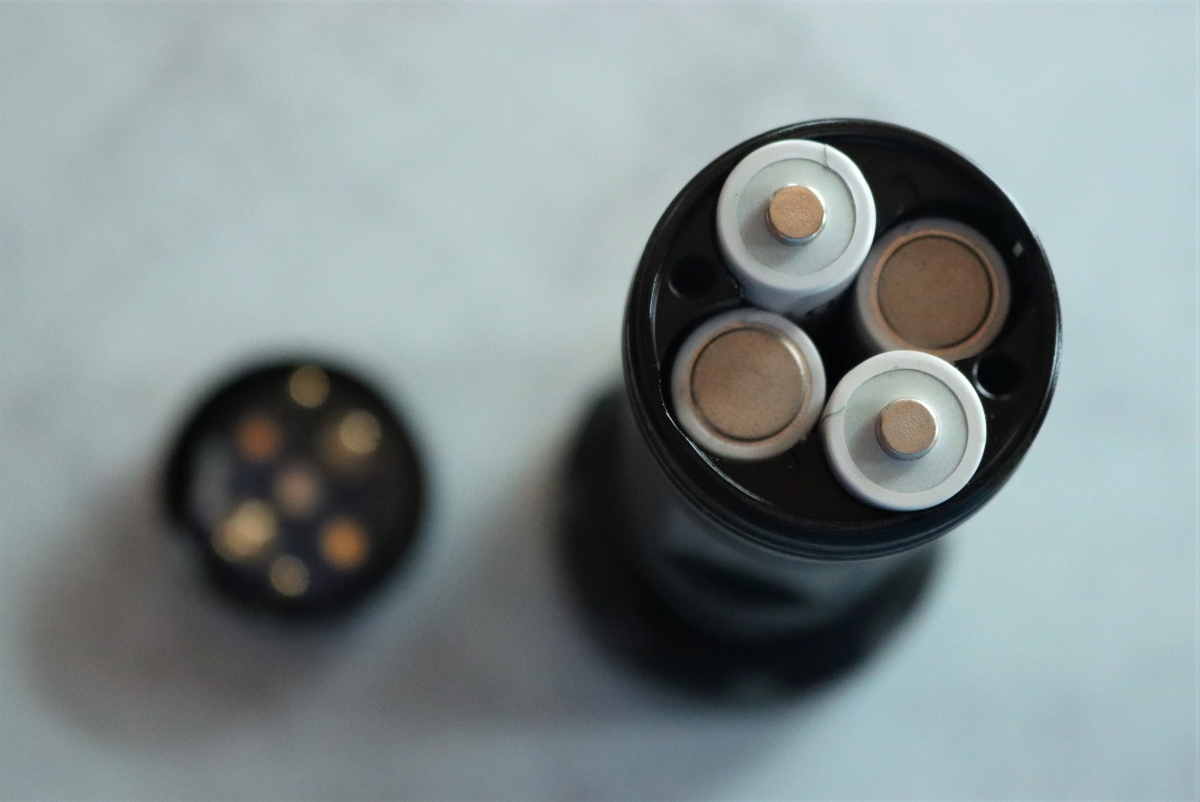
The one light I have tried in this size range is the Nitecore EA81, which offers controls very similar to the EA41/EA42 and can produce up to 2150 lumens. Like the EA41, the EA81’s cylindrical body rolls easily, and its power output is just about matched by the EA42’s 1800 lumens.
Given the price difference, the EA42 seems like a better option, unless the longer runtime allowed by having twice as many batteries is a factor – an EA81 is rated to run 105 minutes in maximum output mode, while an EA42 can only make it 30 minutes.
A cheaper option (which I have not tried, but seems to be well reviewed) is the Nebo Big Daddy 6692 which runs on 9 AA and also has over 2000 lumens of output.

Conclusions
After trialing all these lights (and a few others not worth the mention) is the best general purpose AA flashlights are the Fenix LD42 and Nitecore EA42.
They have a bar shape that keeps them from rolling away while you’re working, and a durable plastic body means they don’t get overly hot or cold in summer/winter. Both are exceptionally bright, and perfect for most uses.
The Nitecore has higher maximum output, and adds strobe and SOS modes, while the Fenix offers the superior rotary switch control. That said, if I had to choose one, my final preference is for the LD42 due to the very convenient control system.
For small everyday lights, you just cannot beat a 5 pack of Ultrafire SK68s. The Fenix E12 is great, and superior as a pocket light, but it so much more expensive compared to the SK68 that it can be hard to justify unless you really are going to carry it in your pants pocket on a daily basis. If it is just sitting in a drawer or in your glovebox, an SK68 is more than sufficient.
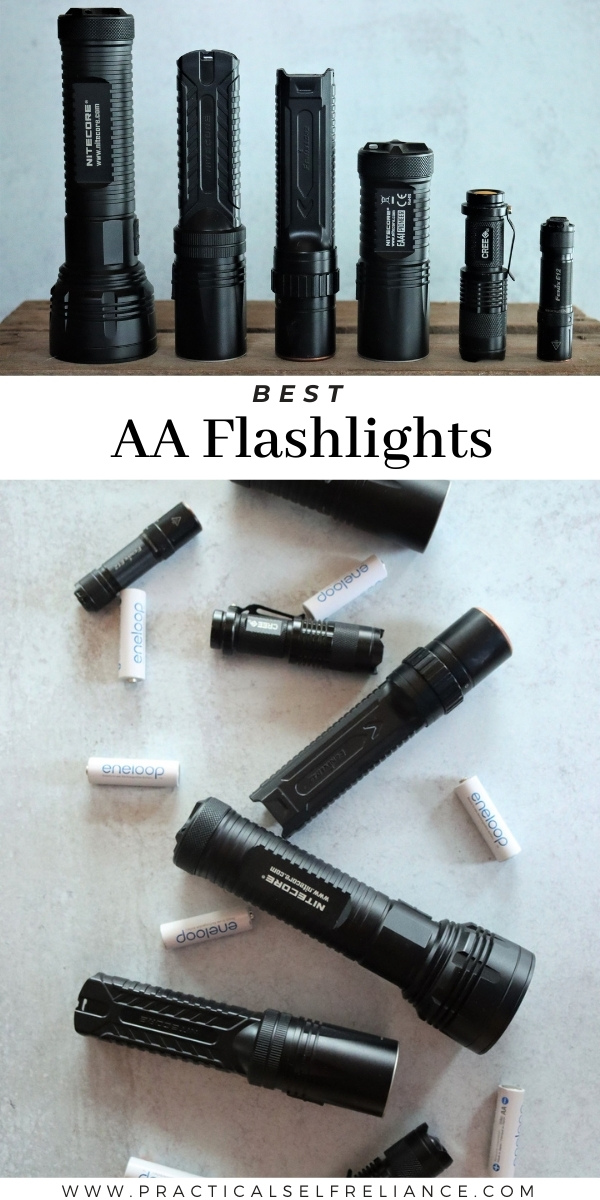
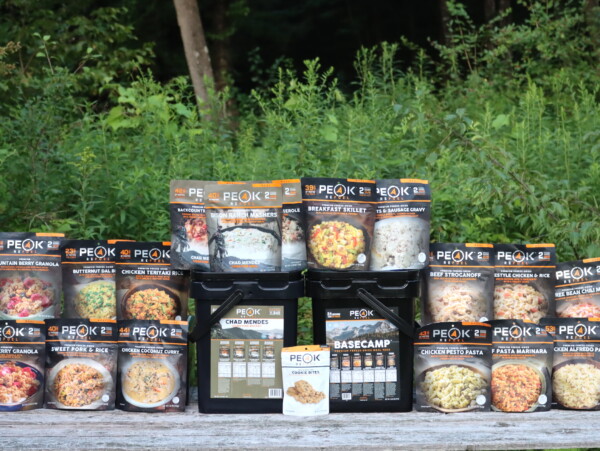
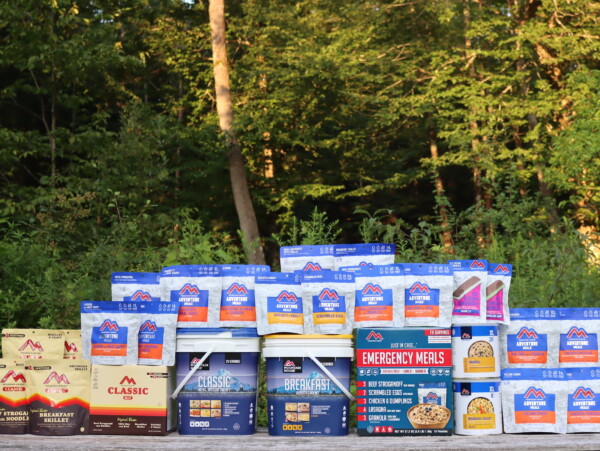
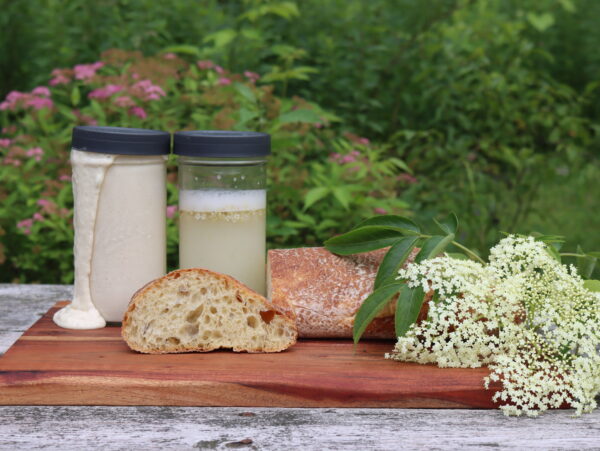
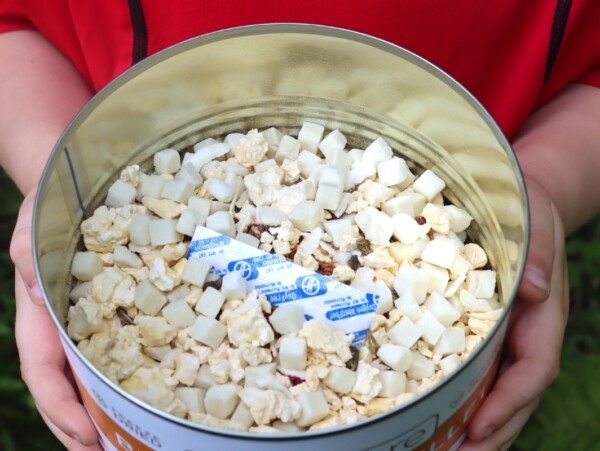










The E12 V2 is a great buy from the fenix store, it works as advertised. It is compact and beam patterns work great.